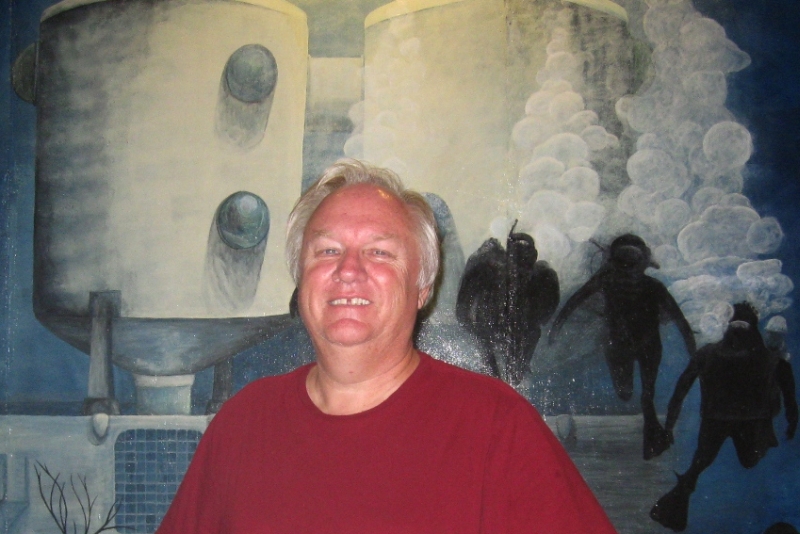
"It’s a small space, but it does a lot," VIERS Administrator Randy Brown said.
The Tektite project had its roots in the scientific exploration that evolved during the cold war as the United States vied with the Soviet Union for supremacy in space. In 1957, the Soviets launched Sputnik, the first man-made satellite to orbit the earth.
Carefully arranged, the exhibits include a window from the Tektite habitat, a slew of photos showing life in the habitat, activity at the base camp, magazine articles from National Geographic and Popular Science telling the Tektite story, and much more.
"And Conrad Mahnken brought his jumpsuit jacket and prescription goggles," Brown said, referring to one of the four aquanauts who spent 60 days in the habitat on the first Tektite mission.
It ran from Feb. 15 to April 15, 1969, and was followed by a second mission from April 4 to Nov. 6, 1970. An all-women mission, it was led by famed oceanographer Sylvia Earle.
The museum has photos of Earle, too, including one of her learning to use a re-breather and another one from her March 2005 visit to VIERS.
The museum opened this spring, but Brown said it’s a work in progress, with more items from that era continuing to surface. One item on the wish list is a silkscreen by the late St. Thomas artist Eric Tillett. While his silk screens of St. John are still found in many island homes, those that include the Tektite underwater habit are rare. Brown says he knows of two, with one promised to the museum at a later date.
The museum has its roots in a VIERS exhibit on Tektite put together for a science seminar several years ago. There was so much interest in the material he had accumulated, Brown said, that the project mushroomed. Looking for a space to house the museum, Brown decided to add some footage to what had been the office. VIERS subsequently built a new office.
The museum is definitely a draw for residents and visitors who brave the road into Lameshur Bay. Some of the road is very rocky, particularly near the start, but once past that point, the downhill legs are paved.
The cabins now used by researchers and the site of summer camps date from the Tektite era, and were used to house the support staff. They’ve been updated and painted yellow instead of the original brown, but they’re still in the same locations.
Some of the items still in use at VIERS were used by those early Tektite aquanauts and the support staff. The blackboard in the museum, a podium and the picnic tables in the dining room all were used in the Tektite project, Brown said.
Alas, the habitat is long gone and was ultimately dismantled in California.
"But we’re working on getting an underwater buoy to mark the exact site," Brown said.
The Tektite Museum is open from 9 a.m. to 5 p.m. daily in the winter, but call first during the summer to make sure someone’s around to explain the exhibits. The VIERS number is 776-6721.





